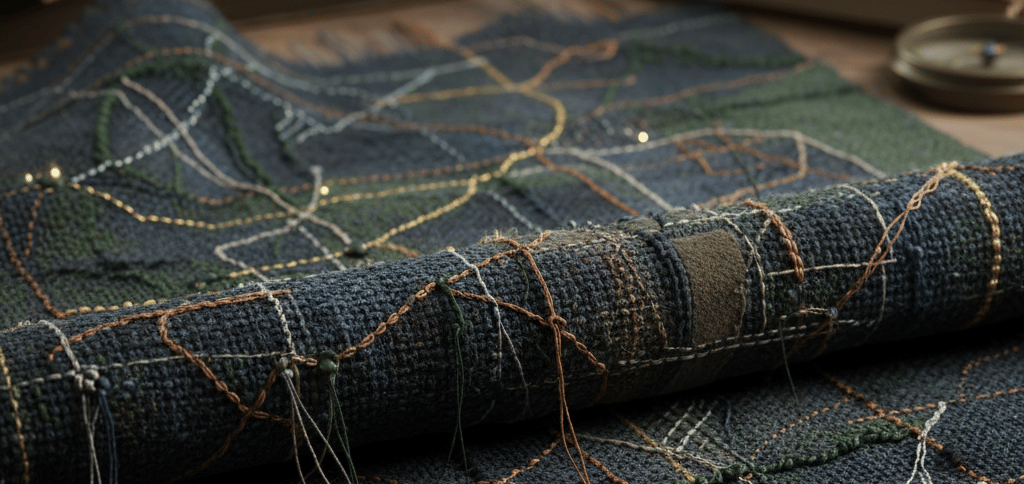Fabric of leadership
Weaving my rugged fabric of leadership.
just chrix.
10/18/20253 min read


For too long, the "Fabric of Leadership" has been presented as a seamless, impossibly perfect tapestry. We see corporate case studies and best-selling books that paint an image of leaders and teams operating with machine-like precision, zero friction, and flawless execution. It's a gorgeous lie. The reality is, that leader doesn't exist.
I know my leadership is far from perfect. I've stumbled, I've had to pivot, and I will always need the perspective of others—mentors, peers, and especially my subordinates—to guide me.
That's why my own "Fabric of Leadership" is a little rugged around the edges. It’s not a perfect weave, but it is real, and crucially, it works. It has worked because I stopped chasing a fictional ideal and started leaning into what’s authentic to me. Every team I've managed has been different, proving there is no single magic bullet or universal management script.
If you’re a leader, my advice is simple: stop looking for the perfect blueprint and start creating your own sweet spot. Leverage others' styles to begin with, sure, but ultimately, you must make it your own. You need to be as authentic as you can be.
Here are the five philosophies that weave together to form my perfectly imperfect approach.
Weaving My Five Leadership Philosophies
My role as a UX design leader is not defined by perfection, but by principled consistency. These five tenets are the threads that hold my 'rugged' leadership fabric together, empowering my teams and fostering a resilient work environment.
1. Champion Craft, Vision, and Innovation—The Creative Core
My first commitment is to inspire the push. It’s our responsibility to look beyond what's comfortable and embrace creativity. By actively fostering an environment where even half-formed ideas can thrive, we unlock innovative solutions that transform projects. This champions the craft itself, uniting the team under a collective vision that drives us forward.
2. Foster Radical Collaboration and Candor—The Honest Connection
I believe a rugged fabric is one built on unvarnished truth. This means cultivating a culture of radical collaboration where team members feel safe to share their thoughts and opinions freely, without fear of judgment. This candor builds genuine trust and ensures we consider diverse perspectives. In my experience, a little friction from honest feedback strengthens the whole team, leading to far more robust design solutions.
3. Cultivate a Culture of Empathy—The Human Thread
Empathy is the most critical thread. As leaders in a field dedicated to user-centered design, we must first be centered on our team. It is essential to recognize and understand the experiences and needs of those we lead. By fostering a supportive and empathetic environment, we allow individuals to be authentic, which in turn helps us connect more deeply with our audience.
4. Team Development and Empowerment—The Ownership Investment
My leadership philosophy is built on empowerment. I see my role as an investor in my team’s professional growth. By providing opportunities for development, we don't just enhance skill sets; we boost confidence and morale. Empowered teams take genuine ownership of their work, leading to higher engagement and a more productive—and happier—workplace.
5. Continuous Improvement and Impact—The Adaptation Loop
The final thread is a commitment to constant adaptation. In the ever-evolving world of UX design, remaining adaptable and open to change is non-negotiable. This means continuously evaluating our processes, actively seeking feedback, and implementing changes that enhance our effectiveness. We focus on measurable impact—whether in user feedback or team satisfaction—as proof that our rugged, authentic approach is leading with purpose.
Find Your Own Sweet Spot
The fabric of my leadership is woven from these five principles. It is not perfect, but it is mine. It has flaws and imperfections, but it reliably guides my journey and shapes my vision.
To any leader reading this: You don't need a glossy perfect image. Be honest about your struggles, lean into your strengths, and focus on the principles that work for your team. Your authentic, rugged leadership is the most powerful kind there is.
